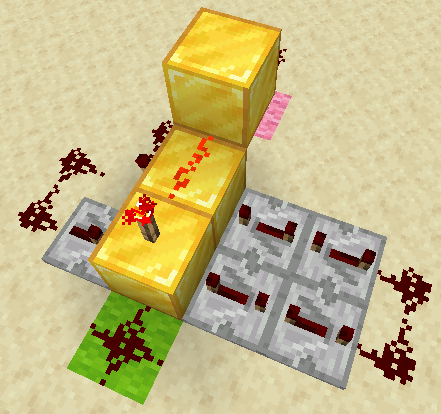
Real world designs must be optimized for the given application. More filtering gives a smoother result, but decreases the high frequency response to the original modulating signal. This filtering is rarely perfect and some “ripple” is likely to remain on the envelope detector output, particularly for low frequency inputs such as notes from a bass guitar. Low pass filtering is then used to smooth the final result, leaving the low frequency modulating signal component. Most practical envelope detectors use either half-wave or full-wave rectification of the signal to convert the AM input into a pulsed DC signal where the peaks of the DC pulses represent the modulating signal.
Block update detector super circuit maker series#
The diode in series rectifies the incoming signal, allowing current flow only when the positive input terminal is at a higher potential than the negative input terminal. The capacitor in the circuit stores up charge on the rising edge, and releases it slowly through the resistor when the signal falls.
Block update detector super circuit maker full#
The reader should investigate the waveforms at different points in the circuit, such as the op amp output and across the diodes, to explain why this circuit works better than the diode full wave or bridge rectifier.Īn envelope detector is a circuit that takes a high-frequency amplitude modulated input and produces an output which is the “envelope” of the AM signal. There is the sharp transition as the input crosses zero. The peak of the rectified output, as seen in figure 7.2.5, is again equal to the peak value of the input. R 1 can be replicated to provide a second input, or it could be extended with a third resistor etc. One interesting feature of using the inverting topology is that it allows the circuit to function as a summation circuit for multiple inputs. The input impedance of the circuit is equal to the value of R 1, and is constant as long as the first op amp is operating within its limits, that is it's inverting input is at a virtual ground. All other normal opamp restrictions apply like other inverting op amp stages, so if a high gain is used the frequency response will be affected. For example, if R 1 is 1kΩ with R 2 and R 3 equal to 10kΩ, the circuit has a gain of 10, and if R 1 is 100kΩ, the gain is 0.1 (an attenuation of 10). If the value of R 1 is higher than R 2 and R 3, the circuit can accept higher input voltages because it acts as an attenuator. If the value of R 1 is made lower than R 2 and R 3, the circuit has gain. This property can be used to make non-linear amplifier circuits which have either logarithmic or anti-logarithmic (exponential) input to output relationships.ħ.1 Half-wave rectifier with filter capacitor or peak detector Also as we discovered in chapter 5 the diode voltage, in the forward conduction region, is exponentially related to the current through the diode. This characteristic can be used to make a voltage (actually current) dependent attenuator. In these situations it is often desirable to effectively cancel or correct for the forward voltage drop of the diode to accurately measure the required value of the signal.Īnother property of the diode is that the small signal conductance (or resistance) of the diode is a function of the DC current flowing through the diode (the operating point). There are other cases where a time varying signal might need to be converted into a DC signal. In chapter 6 we discussed the use of the diode as a means to convert AC power into DC power.


Please take notice the following matter is listed in the cause list dated: in Court-III as item no 4 will not be taken up.The next date of Hearing is indicated below:- (275 KB pdf) Please take notice that due to paucity of time the following matters listed on in the Court-II were not taken up.


 0 kommentar(er)
0 kommentar(er)
